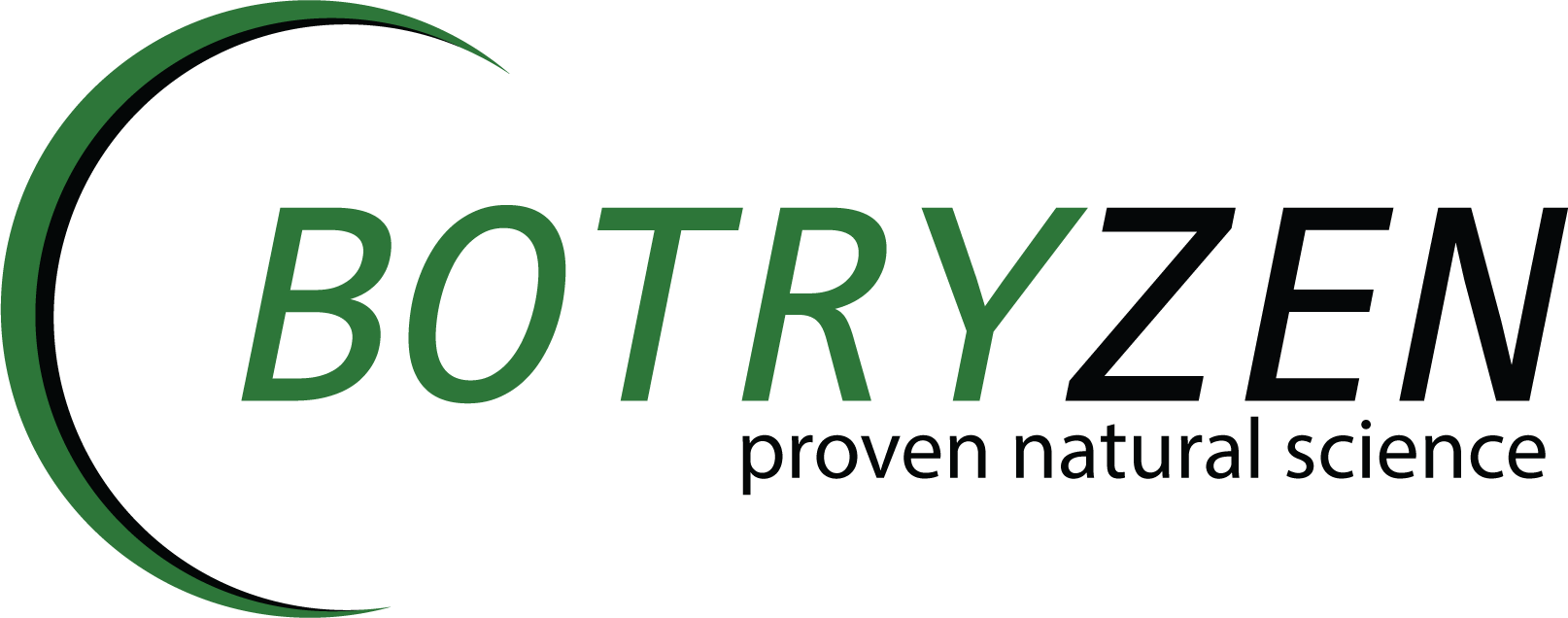Grapes |
Many years of trials have shown the effective control of Botrytis with BOTRY-Zen® and ARMOUR-Zen®. BOTRY-Zen® works from flowering, colonising the nutrient rich flower caps and aborted berries. This is the tissue Botrytis would initially colonise, ready to infect the ripening berries later in the season. BOTRY-Zen® reduces the inoculum present within the bunch, and in recent trials has also reduced latent berry infections. ARMOUR-Zen® is applied from pre-bunch closure and stops the Botrytis spore from germinating. A mid season spray of MIDI-Zen® also helps combats Botrytis and Powdery Mildew.
Two to three applications of BOTRY-Zen® are required from flowering to pre-bunch closure. ARMOUR-Zen® should be used to protect the ripening berries later in the season from direct infection by Botryits.
The fungicide programme consisted of Early season: EuparenMult®i and Switch at flowering, Captan at berries pea size; Late season: Switch® pre-bunch closure, 4 Captan applications from post bunch closure to 2 ½ weeks pre-vintage. The BOTRY-Zen® programme was 2 applications of BOTRY-Zen® at flowering and a third at berries pea size followed by ARMOUR-Zen® from pre-bunch closure.
With the recent addition of MIDI-Zen® growers are able to add in to their programme a product that directly controls Botrytis and has the added advantage of controlling powdery mildew at the same time. MIDI-Zen® was specifically developed to control botrytis between veraison and pre bunch closure. Two applications are required through this time frame.
Quick Reference for Timing and Application
BOTRY-Zen and BOTRY-Zen WP: EL 20 10% Caps off - first application. EL 25 80% Caps off - second application. Application rate 800 g per 100 litres.:
MIDI-Zen: E32 Beginning of Bunch Closure to E35 Veraison. Application rate 3 litres to 100 litres.
ARMOUR-Zen: E35 Veraison to Harvest. Application rate 1 litre to 100 litres.
Trial Results
2012
A research paper was published by Calvo-Garrido, Vinas, Elder, Usall, Teixido, titled “Suppression of Botrytis cinerea on necrotic grapevine tissues by early-season applications of natural products and biological control agents”.
In the research paper it reads: ….the application of synthetic fungicides in vineyards worldwide has become less popular owing to the ease with which Botrytis Cinerea populations quickly adapt to new fungicide chemistry and reports of harmful environmental and human health risks associated with some synthetic fungicides. Constraints associated with fungicide use and the increasing number of organic growers highlight the need for alternative or complementary control strategies against BBR (Botrytis bunch rot)…..
2011
After the pilot season of the three year project, The Organic Focus Vineyard Project was expanded by two more prominent wine companies in Marlborough and in Central Otago. BOTRY-Zen® was again included in the organic spray programme for the Hawkes Bay site for these two seasons.
2010
Organic Winegrowers New Zealand, with funding from the Sustainable Farming Fund and New Zealand Winegrowers, launched a three-year project (The Organic Focus Vineyard Project) to document and demonstrate the realities of organic production. In the pilot season a Hawkes Bay company contributed their vineyard to the project. The vineyard was split into side by side organic and conventionally managed blocks featuring two grape varieties (Merlot and Syrah) characteristic of its region. BOTRY-Zen® was included in the organic spray programme for this site.
2009 Vintage Results
In a season that produced some heavy Botrytis pressure the BOTRY-Zen®/ARMOUR-Zen® programmes have performed well. Trial results show that ARMOUR-Zen® applications late season are significantly reducing Botrytis crop loss. There has been positive feedback from growers who used a BOTRY-Zen®/ARMOUR-Zen® programme this season and will continue to expand their application areas in the coming season. Figure 2 shows the results from grower-applied programmes in Marlborough. All of the blocks were Sauvignon Blanc, except for Vineyard 1C which was Pinot Gris. In five of the six blocks the Integrated programme performed at least as well as the Conventional programmes in reducing Botrytis crop loss. The results from vineyards 4 and 5 would suggest that a BOTRY-Zen®/ARMOUR-Zen® programme, without the inclusion of any chemical Botryticides, can effectively control Botrytis.
Vineyard 1A had no Conventional comparison block. The vineyards applying ARMOUR-Zen® made between 3 and 5 applications through the mid to late season.
In five of the six blocks the Integrated programme performed at least as well as the Conventional programmes in reducing Botrytis crop loss. The results from vineyards 4 and 5 would suggest that a BOTRY-Zen®/ARMOUR-Zen® programme, without the inclusion of any chemical Botryticides, can effectively control Botrytis.
2008 Vintage Results
Assessments show that a BOTRY-Zen®/ARMOUR-Zen® programme is providing protection that is comparable with a chemical fungicide programme. There were higher levels of Botrytis in the field compared with the 2007 season, with up to 40% crop loss in unsprayed treatments. The results from Gisborne, Hawke’s Bay and Marlborough field trials show the standard BOTRY-Zen® programme which had been recommended to growers, (that is an integrated approach using BOTRY-Zen®, Switch® and ARMOUR-Zen®) performed as well as the chemical fungicide treatment (refer to Figure 1 below). The full season chemical-free programme using BOTRY-Zen® and ARMOUR-Zen® also performed well against both Botrytis rot and sour rot (sour rot is not tolerated by wineries as it affects the flavour of the wine), significantly reducing disease to a level similar to that of the chemical fungicide programme.
This shows that the BOTRY-Zen®, ARMOUR-Zen® and Integrated programmes performed equally as well as the full season fungicide programme in both the Hawke’s Bay Chardonnay and Sauvignon Blanc.


